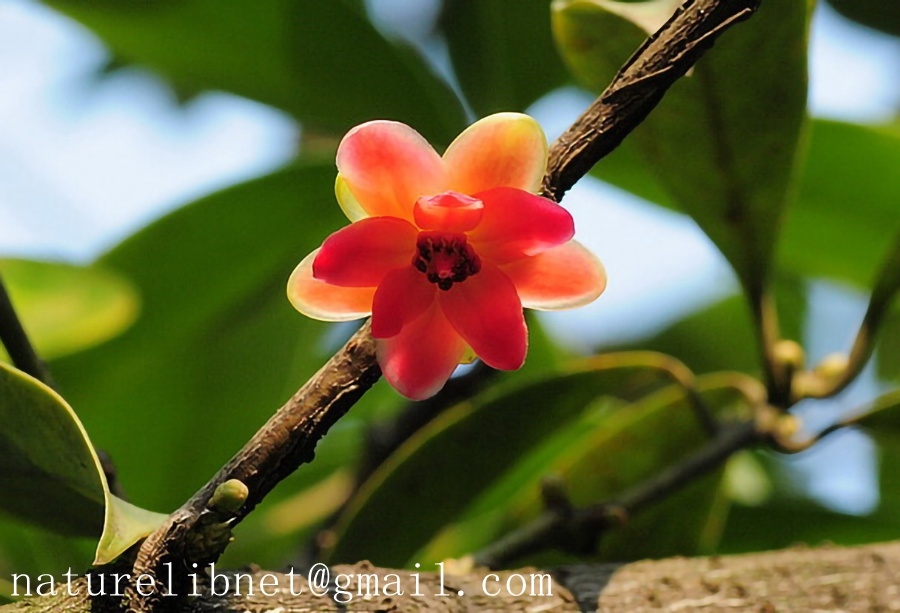- Scientific Name: Illicium lanceolatum A.C.Sm.
- Ref: Sargentia. 7:43. 1947
- Chinese Common Name: 红毒茴 hóng∙dúhuí, 莽草 mǎngcǎo
- Japanese Common Name: ベニバナシキミ [紅花樒] benibanashikimi
- Family: Illiciaceae
- Genus: Illicium
- Distribution: Mixed forests, thickets; 300-1500 m. Anhui, Fujian, Guizhou, Hubei, Hunan, S Jiangsu, Jiangxi, Zhejiang.
Shrubs or trees, to 10 m tall. Perules small, inconspicuous. Leaves in clusters at distal nodes; petiole 0.7-1.5 cm; leaf blade lanceolate, oblanceolate, or obovate-elliptic, 5-15 × 1.5-4.5 cm, leathery, midvein adaxially slightly impressed, secondary veins 6-10 on each side of midvein and inconspicuous, base narrowly cuneate, apex caudate to acuminate. Flowers axillary or subterminal. Flower peduncle 1.5-5 cm. Tepals 10-15, red to dark red, elliptic to oblong-obovate (largest), 8-13 × 6-8 mm (largest), fleshy. Stamens 6-11, 2.8-3.9 mm; filaments 1.5-2.5 mm; connectives apically inconspicuously truncate to slightly emarginate; anthers 1-1.5 mm; pollen grains trisyncolpate. Carpels 10-14, 3.9-5.3 mm; ovary 1.5-2 mm; style 2-3.3 mm. Fruit peduncle 6-8 cm. Fruit with (9 or)10-14 follicles; follicles 14-21 × 5-9 × 3-5 mm. Seeds 7-8 × ca. 5 × 2-3.5 mm. Fl. Apr-Jun, fr. Aug-Oct. (Flora of China)
